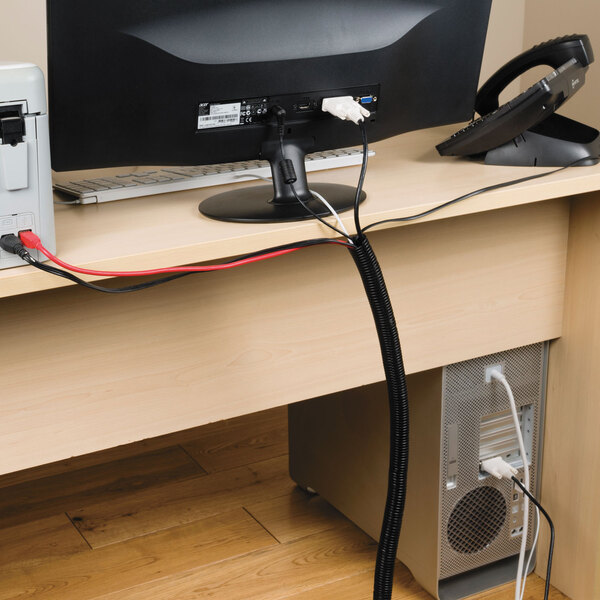

Connect to the ethernet hub by patch cables and mouse a new cable to each room.
#Tidy up show cable tv
If you need to pass cable through a wall between rooms you can fit a brush-type wall plate outlet cover on each side of the wall.īefore you start making your own custom wall-plate outlets check out the available range, which includes pre-made multi-RJ45 sockets and RJ45 and TV aerial combos. Where a TV-aerial socket already exists, the smart way to run a data cable is to follow the same pathway as the aerial lead and then convert the aerial outlet into a dual aperture aerial and data point. Always use a non-conductive cable feeder to avoid electric shock. Apart from the risk of electric shock, placing data cables too close to electrical cables can interfere with data flow. If you try to mouse cables sideways you’re likely to push your plaster away from the stud framing.īe aware of the location of electrical cables. You should only mouse cables through walls from beneath the house upwards or from the ceiling cavity down. Network test tool – enables you to check the quality of ethernet sockets and leads and troubleshoot network wiring problems.RJ45 crimping tool – what you need to make your own patch cables using RJ45 plugs and ethernet cable.IDC (Krone) or 110-type punch tool – what you use to wire your ethernet cable into the grid plate inserts.Cat 6 solid core ethernet cable – the (typically blue) wiring that connects your plate inserts in different locations.Cat 6 RJ45 grid plate insert – the part that fits behind the aperture grid plate to give you an ethernet wall socket.You can also use these plates to create a distribution panel for multi-room cabling. For a location such as a media room you could customise a dual-aperture plate to carry ethernet and TV aerial.

These plates are the face covers used with matching mounting grids when making up your own multi-connection plates.

When choosing them remember that one socket will be taken up by the main network connection, so a five-port switch will only let you connect four devices. Home ethernet switches could have anything from five to 26 ports. You can also plug one directly into your modem-router to feed a distribution wall plate. You can plug one into your modem-router to turn one socket or port into multiple connections, or you can have one at the receiving end of a single line (such as a media room) and connect multiple devices at that end.
#Tidy up show cable how to
We’ll also show you how to bring these cables back to one point in a cupboard or on a shelf that’s tidy and out of sight.Ī well-designed communication hubA cabled local area network (LAN), also known as ethernet, uses cables to directly connect your devices to your modem-router and the internet.Ī local network also enables your devices to talk to each other, and can improve speed when sharing files between computers or streaming music or video from a computer to other devices on the network. Here’s how to hardwire ethernet cable into areas where high-demand devices live. Although wireless is very convenient, a cabled connection will typically be faster and more reliable than Wi-Fi.


 0 kommentar(er)
0 kommentar(er)
